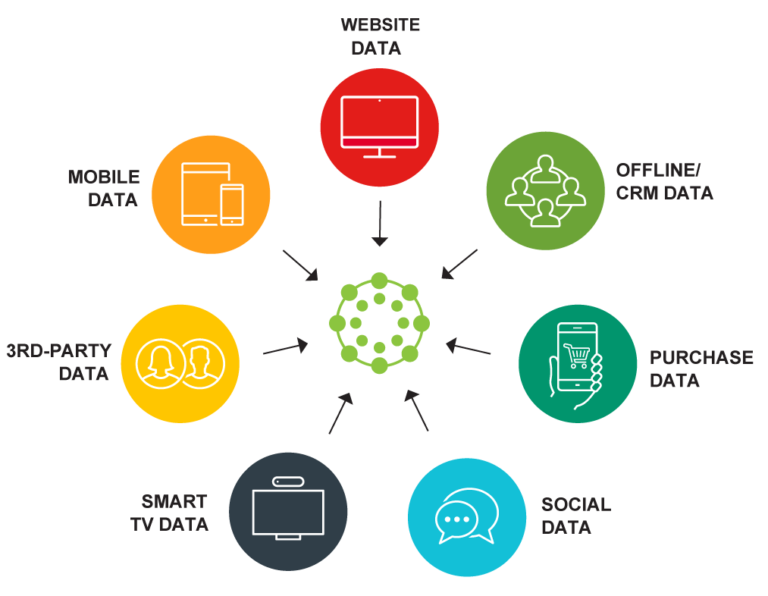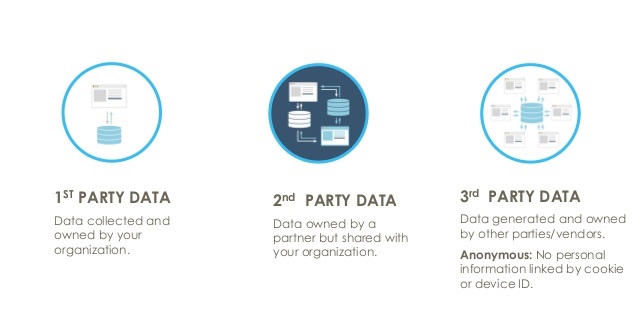
Programmatic Landscape
In an era where digital advertising and marketing has advanced to become the leading medium, an increasing number of brands and businesses run their campaigns digitally to create awareness, generate leads and ultimately sales. However, none of these would be feasible without constantly evolving technology based around programmatic marketing and advertising.
The present programmatic landscape is simply an extension of the traditional two-party system – advertisers and publishers. To further understand the current programmatic landscape, it is important to be able to understand the programmatic ecosystem.
The image below depicts the programmatic media buying landscape:

Source: http://tiny.cc/46fy5y
What is programmatic?
Programmatic advertising, at first glance can seem like an ambiguous concept. A starting point would be to think of programmatic as a way to buy and sell advertising – with some parts automated, and others, programmable, making it an easier more efficient way to buy ads and opening more opportunities to leverage data in real-time, given that less manpower is involved.
However, programmatic cannot be completely automated. People are still a necessary part of the process. Some programmatic channels (e.g. video or native) offer less automation than others (e.g. desktop display advertising). Besides, you require people to make decisions regarding strategic targeting and performance optimization. To put it simply, programmatic advertising is like flying on autopilot; most decisions are handled by technology, but the pilot is still required in the cockpit to decide where to go, and to occasionally take over the controls.
The Programmatic Ecosystem
Source: https://tinyurl.com/y3a3sjxz
Getting lost in programmatic jargon and acronyms is understandable. In this section, we will outline the major components within the programmatic ecosystem and their main functions.
The Advertiser: If you are reading this, this is probably you. Without your company buying the ads, the advertising world would cease to exist.
The Publisher: This includes all those websites, mobile apps and publications that create and deliver the content – as well as the ad space that advertisers buy.
Ad Exchanges: Ad exchanges are the backbone of programmatic ad buying, and a major driving force for display advertising in the past few years. On an ad exchange, thousands of publishers can make unsold ad space inventory available for advertisers to bid on automatically, as opposed to traditional one-on-one sales negotiations. The buying and selling happens programmatically – which is mostly a fancy term for automatically.
Ad Networks: Media companies that sell inventory across a range of publisher sites to advertisers at a set price. Ad networks work directly with publishers to sell ad impressions that a publisher has not directly sold.

Source: https://tinyurl.com/yd52gtcm
Data Management Platforms (DMPs): A DMP is a software that collects audience and campaign data from a variety of information sources – a data warehouse. In digital advertising, these sources include publishers’ websites and apps on which advertisers buy advertising space. A DMP offers a central location for marketers to access and manage data, like mobile identifiers and cookie IDs to create targeting segments for their digital advertising campaigns. Publishers also often use DMPs to house data about their users. They can then use that information to package audience segments of their own to sell to advertisers.
Demand-Side Platforms (DSP): Demand-side platform is a tool that enables marketers to bid on and buy ads from ad exchanges.
Supply-Side Platforms (SSPs): Publishers use these platforms to sell their ads on ad exchanges – the mirror opposite of DSP.
Agency Trading Desk: A service provided by some advertising agencies, to which clients can outsource their programmatic media buying efforts. The trading desk manages most or all aspects of buying, managing, fulfilling and reporting on media purchased on the advertising exchanges.
Building Blocks of Programmatic

Source: https://tinyurl.com/y66995xe
Types of Data
Understanding your data is crucial to achieving your ad objectives. However, it helps to know the three types of data that are integral to programmatic advertising and the quality of data determines how accurately you can target your audience.
First-Party Data
Data collected directly from users generated through your company website and on-site customer interactions. First-party data belongs to your brand consisting of essential information about your user through their search enquiries, purchase history, purchase patterns and so forth. Given this, first-party data is of the highest value to a company.
Second-Party Data
Simply put, second-party data is first party data for someone else. Companies with similar target audiences establish partnerships involving a swap of first-party data. The process includes a partner company acting like a DMP where the data shared is generally not available to other advertisers. By sharing this information directly with each other, companies are able to target customers based on quality, relevant data. Second-party data can also be obtained through DMPs, tag managers, cookies and master cookies.
What’s the catch? While it is good quality data and is cost effective, it is crucial to have good relationships with partner companies. You should not give away your precious first-party data carelessly. It is equally important for users to be able to “opt-out” of giving this kind of information to you; it’s a legal minefield.
Third-Party Data:
Third-party data is data collected by an entity that does not have a direct relation with the user in which the data is collected. It is data that is often generated on various platforms and websites, and then collected by a third-party data provider, such as DMP. DMPs give you vast information about your target market audience at a price. For instance, interaction of users on the web and their behaviors, which are then used to classify users, at a price. This data is used in behavioural, contextual and demographic targeting.
A common difficulty advertisers face on third-party anonymous data is not all advertising platforms accept this type of data. Fortunately programmatic ads accept third-party data which enables us to benefit off this data and use it on other advertising platforms that do not accept it.
The challenge? It can get expensive since third-party data providers charge based on CPM. Also since this data is available to your competitors, the audiences being targeted are not unique.





